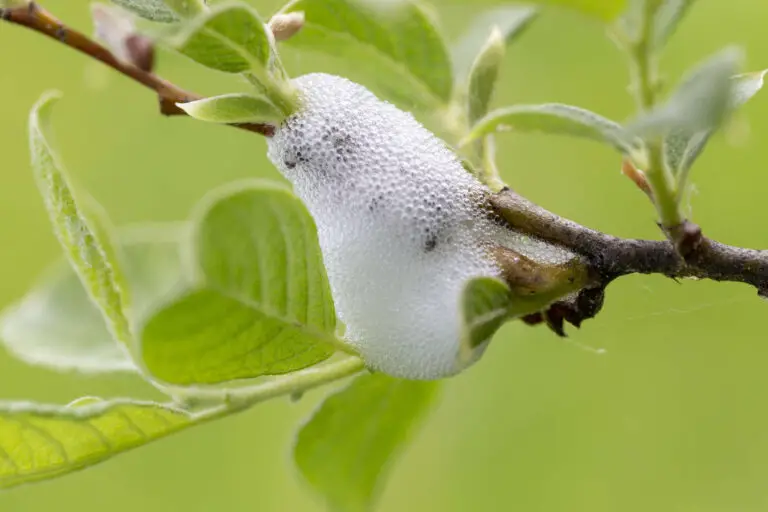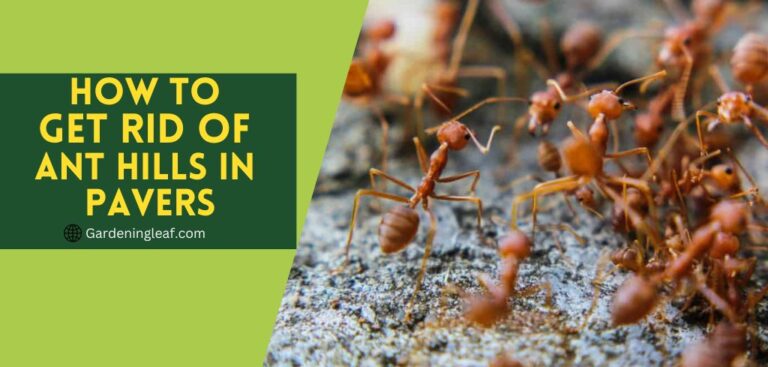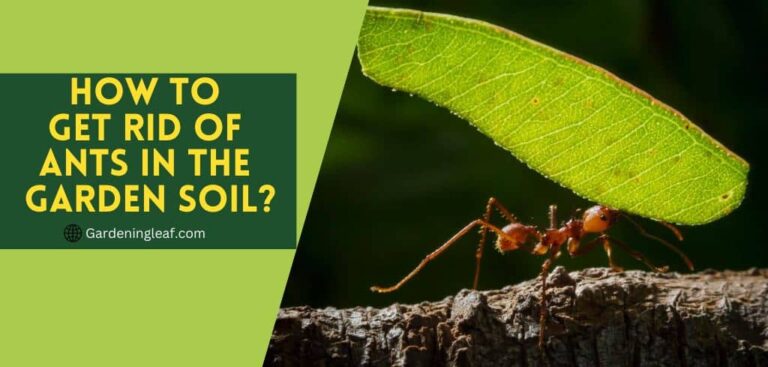How to get rid of cactus bugs: The best way to do it
For cactus plants, the end of summer can mean only one thing – cactus bugs! These small but pesky insects love to infest cacti during the warm months, and their infestation can cause significant damage. If you’re suffering from a cactus bug infestation, don’t worry – we are here to help. This article will cover everything you need to know about how to get rid of cactus bugs.
What are cactus bugs?

Cactus bugs (also known as Cactobius species) are small, reddish-brown beetles that feed on cactus plants’ pads and leaves. They cause damage by eating large quantities of tissue, which can kill a plant quickly. Cactus bugs typically enter homes during warm weather months for shelter or food, but they are not known to spread any infection. If you see cactus bugs near your cacti, remove all debris around the plants, so they have enough space to eat and lay their eggs. You can also try horticultural oil spray on affected areas to repel them away from your plants.
Different types of cactus bugs?
Several common cactus bugs can cause problems for cacti. These insects feed on the plant’s fluids; if they get into the cactus’ system, they can damage it significantly. Some of the most common cactus bug species include:
- The mealybug (Pseudococcus maculatus): A tiny (~0.5 mm) white bug that feeds exclusively on saponins found in succulent plants such as ocotillo and agave; this pest causes leaves to drop from damaged plants。
- The cacti mealybug (Cactobius cactorum): This is the most common type of mealybug pest on succulent plants, and it infests plant tissues where fluids are secreted, such as on leaves or pads.
- Wooly aphids (Eriosomatinae): A common insect pest of succulent plants, wooly aphids infest cacti by secreting honeydew (a type of sugary juice) which can cause the plant to rot. Symptoms of infestation include stunted growth, sooty mold, and soft-bodied green or brown aphids that lack wings. Horticultural oil spray will control Wooly Aphid populations on succulents.
- Red spider mites: These small arachnids are typically white but can be red or black. They feed on succulent plant tissue and reproduce rapidly, so they’re a common pest of succulents in warm climates. Red spider mites cause leaves to curl and brown. Spraying the plants with horticultural oil or insecticidal soap will allow you to control them.
- Scale insect: A scale insect is a small, wingless insect that lives on plant surfaces and sucks out the plant’s nutrients. Succulent plants are especially susceptible to scale infestation because they often lack natural defenses against this pest。
- Dactylopius: This mite-like pest infests succulent plant tissue, most commonly on the stem near the soil line. The mites suck plant sap and can cause distorted growth, wilting leaves, and deformed cacti specimens。
- Dactylopiidae: Several mite-like pests infest succulent plant tissue, the most common of which is the Dactylopiidae. This pest causes distorted growth, wilting leaves, and deformed cacti specimens。
How to identify cactus bugs?
Mealybugs are a common pest found on various plants, including cactus. The good news is that they’re not harmful to humans, but they can be annoying and difficult to get rid of. Thankfully, are a few easy methods to remove them.
First, identify the cactus bug by looking for its droppings. If you see any brown oval eggs or cocoons on the plant, that’s a sign that cactus bug larvae are present. Once you know which cactus bug is infesting your cacti, use an insecticidal soap or pesticide to exterminate them. Follow the instructions carefully to know how to get rid of mealybugs on cactus with these four steps! If all else fails, consult a cactus bug expert.

How to get rid of cactus bugs?
Different people use different methods to get rid of cactus bugs. I’m going to talk about some of the most common methods below.
Using a Homemade Soapy Water Spray
You can try a simple solution to get rid of cactus bugs. Take 500 ml of water Mix 1 tsp mild soap Fill it in a spray bottle. Then spray the soapy water e solution onto the insects and wait until they die, usually within an hour. Gloves are recommended since they may be harmful if handled directly.
Using an Insecticidal Soap
Using insecticidal soap is another alternative. Cactus bugs can be gotten using insecticidal soap. The cactus bug larvae and eggs are killed by insecticidal soaps. Sprinkle the insecticide on the infected plants, wait a few minutes, and then thoroughly water the plant.
This spray bottle is the most efficient way of killing pests. All you have to do is get some dish soap, then spray it on your plants that are infested with pests. Not only will the pest be killed, but the plant won’t die as well by this cheap method.
Use 70% Isopropyl Alcohol.
If cactus bugs are resistant to insecticides, you may want to try using 70% isopropyl alcohol. Isopropyl alcohol is a common ingredient in rubbing alcohol. It is also effective against cactus bugs and other insects. Simply spray the insecticide on the infected plant, wait a few minutes, and rinse it thoroughly after that.
Neem oil
Neem oil is the best option if you don’t want to utilize harmful substances. Spray the neem oil solution on the mealybug infestation and leave it on for a few minutes. The pest will die, and the plant will also be treated with neem oil, which benefits them. Spray the insecticide on the afflicted plant after mixing neem oil with water. After a few minutes, rinse off the plant thoroughly with water.
Use sticky traps
You can try using sticky traps if cactus bugs are found inside the plant. These traps use a sticky substance that cacti bugs cannot resist crawling onto. Once they’re in the trap, pulling them off will result in their death.
Use vinegar
Using vinegar is another option. Cactus bugs may be controlled with vinegar, which is a natural insecticide. Spray the plant with vinegar and leave it for a few minutes before watering it thoroughly.
Pick off bugs with tweezers.
If cactus bugs are found on the plant, you can pick them off with tweezers. Grab the bug with tweezers and pull it off of the plant. Using these methods, you can usually get rid of mealybugs on succulents.
Use a garden hose
If cactus bugs are found on the plant, you can spray them off with a garden hose. Simply spray the insecticide onto the infested plants and water the plant thoroughly. Naturally, this won’t keep insects away from your cactus forever.
Other ways to get rid of mealybugs :
One option is to try and introduce other bugs that will eat up the mealybugs. Ladybugs and Green Lacewings larvae love eating these mealybugs, so adding them to your garden might be a good strategy. However, if your cactus is a houseplant, this is not a good idea. Because it’s not at all sensible idea to invite other inserts inside your house.
What Preventive measures need to get rid of mealybugs on cactus
Examination Before Bringing Them Home!

Always check the plants before you bring them home. You may encounter cactus bugs on them, which can be hard to eliminate.
- Cactus bugs are attracted to plant juices, so confirm that all plants you purchase are pest-free before bringing them home.
- Inspect Plants for Signs of Infestation Before Bringing Them Home!
- Look for cacti bug infestations on succulent plants’ leaves, stems, and flowers. These pests are small enough to be difficult to see with the naked eye, so it is important to use inspection methods such as a magnifying glass or digital camera so as not to bring home any cacti bugs that may already live inside your new succulent plant.
- It’s a good idea to quarantine a new plant for a few days after you bring it home to ensure that there are no cactus bugs present.
Inspect Your Plants Regularly!
Inspecting your succulent plants regularly for signs of cactus bugs is important. Look for small, red insects that feed on succulent plant juices. If you find cacti bug infestation on any part of the plant, take action immediately!
If the pesticide is necessary to treat cactus bug infestation, be sure to read the instructions carefully first. Usage can have harmful side effects if not used correctly. However, taking preventive measures such as regular inspection of your plants will go a long way in protecting them from this pestilence.
Keep All Plants Clean!

Keeping your plant clean is one of the most important things you can do. The health of plants will also benefit from a decrease in the quantity of bugs. Wash plants with water and mild soap once or twice weekly to keep them clean. Ensure that the plant roots are also cleaned of any dirt.
Avoid Overwatering!
The most common cause of cacti death is overwatering. When this happens, the bugs come out, and you’ll have difficulty controlling them. To water your cactus effectively. Make sure to water it slowly and directly onto the cactus soil, so no surface water is involved. If you must water your succulent plants in a pot, make sure to pour just enough water into the pot so that it is slightly below the surface of the cactus soil. Never allow water to overflow from the plant and onto any debris or ground surfaces.
Provide Proper Drainage!
Cactus bugs attract wet surfaces, so providing proper drainage for cactus plants is important. Verify that there is no standing water close to the plant’s roots. Insecticides or organic sprays can be used to get rid of these pests.
FAQs :-
How can you prevent cactus bugs from coming back next year?

You can do several things to prevent them from returning next year, including applying to aerate or insecticidal soap around the plants, using organic methods to fertilize the soil, and destroying eggs and pupae before they become adults. Be sure to read all product labels carefully before making any commitments so you don’t use products that harm your garden’s cacti or other plants.
Finally, keep an eye out for these pests during summer months – if you see them flying around or emerging from the soil, there is likely an infestation nearby. Pesticides may be applied to eradicate them.
How To Prevent Mealybugs on Cactus Plants
Cactus bugs are a common pest that can affect cactus plants. If you’re struggling with cactus bugs, here’s what you need to know: mealybugs are the pest of cactus plants, and they are a type of whitefly. Regularly using insecticidal soap water on the plant is the best way to avoid them. If you see mealybugs, take pictures and contact your local cactus nursery for help.
Look for signs of pests around the house. It’ll be significantly simpler to get rid of the cactus bug problem once you know what it is. So, don’t hesitate to get help from a cactus specialist to get your cactus plants back on track.
Can I use any pesticide to kill cactus bugs?
Yes, cactus bugs can be killed with pesticides. One of the most common pesticides designed to kill cactus bugs is oil-based. You can also use products that are organic or petroleum based. However, it is important to note that pesticide efficacy decreases when cactus bugs are infested by other pests like aphids.
How do I know if my method is working to eliminate cactus bugs?
If you are using a method of extermination to get rid of cactus bugs, it is important to check the area for any signs of damage or invasion. Additionally, try inspecting your plants for any bug larvae or eggs. If eliminating all potential areas does not work, contact a professional exterminator. Cactus bugs are small, wingless insects that feed primarily on succulent plants. They can be a nuisance both during the growing season and winter when they infest cacti for shelter.
Conclusion
Like most gardeners, you’ve probably had to deal with cactus bugs at one point or another. These pesky little creatures can be a real pain, and they’re not easy to eliminate! In this blog, we discussed the different types of cactus bugs, how to identify them, and how to get rid of cactus bugs.
We also gave you tips on preventing cactus bugs from coming back next year. So, stay tuned for more helpful information on how to get rid of cactus bugs! Hurry now, use our tips and get your hands on growing a cactus successfully without pests and bugs. Happy gardening.
Source :- Cactus-Bugs






